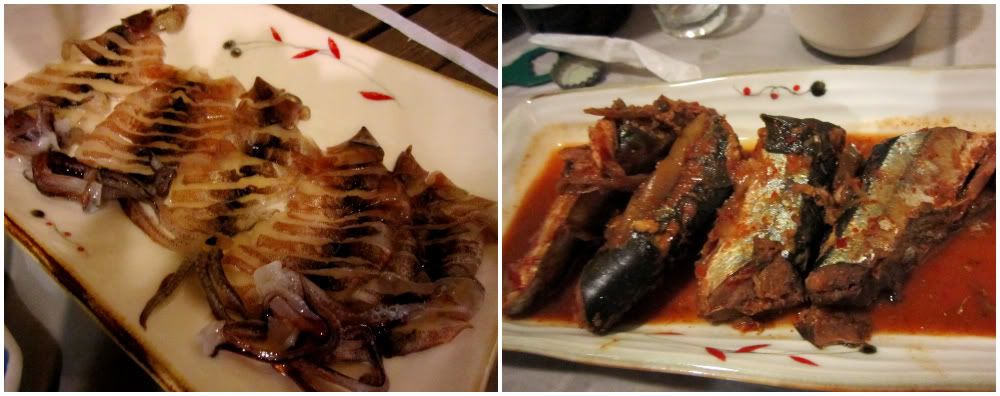 |
| Penis Fish -- One "bizarre" food I did not try, but thought you might enjoy seeing |
My first real test came on the day Kim’s friend Gavin took me to the market. I had told him about my first trip and he took me back to help me get reoriented. While walking, I had mentioned my one “bizarre food” goal of trying sundae. Though the American spelling conjures a very different association, sundae is blood sausage, which is made from pig intestines and filled with pork blood, barley, and cellophane noodles. We found a place and Gavin asked me if I wanted to try sundae or chicken feet. I wimped out on the chicken feet and so sundae it was.
While on
my food courage kick, Kim and her friends all took me out for sannakji. You can evidently get sannakji two ways. One is how we ordered it—a prep that involves
cutting a live small octopus up with scissors and serving it while it is still
wiggling. Two, the whole octopus is
placed, live, on a stick. You then
skillfully bite it in a strategic place so as to kill it, which keeps it from
trying to crawl back out your throat while you are eating it. On hearing that some have died while trying
option two, I went with the former.
With the sannakji, we also ordered fresh squid and the owner gave us a complimentary, or “service,” plate of fish. I much preferred the squid to the sannakji because I thought the texture was softer and smoother, it wasn’t quite as slimy, and had more flavor.
What sannkji did remind me was that “food courage” is merely just getting over “food fear.” Fear of what is squishy or strong tasting or unexpected or uncertain. In experiencing and writing about this range of "bizarre" foods, I did realize what a funny thing food perspectives are. In talking about foods you are not used to, the only words really available are "exotic," "bizarre," "strange," etc. all employing a note of other and a negative connotation. Think how much harder that negative beginning makes it to try something new when you are already coming in with bad expectations.
In teaching sexuality and literature classes, I’ve come to discover that the biggest problem with sex is that everyone has a rule for it and most think their rules are what is “true” and “right.” Same goes for food. Taboo food is only taboo because it goes against what you think is right and correct about food. That doesn’t make it wrong.
Food relativism, like sex relativism, takes thinking about preference, individuality, variations, experimentations to decide what is good to you. I’m glad I pushed my food courage limits. Who knows, maybe next time I’ll be able to try those chicken feet . . . maybe.














0 comments:
Post a Comment